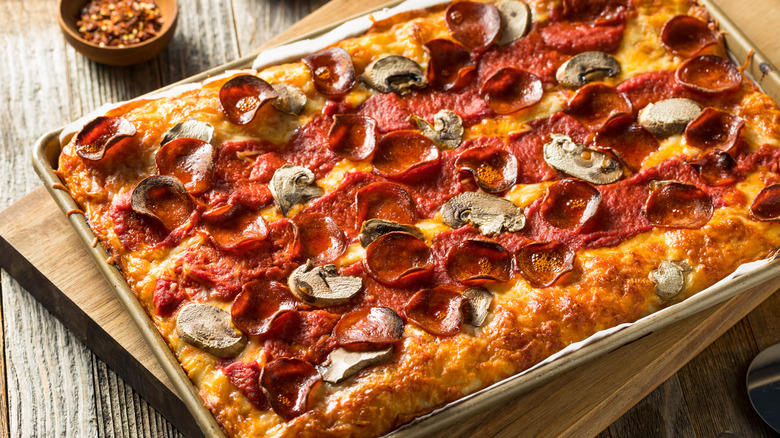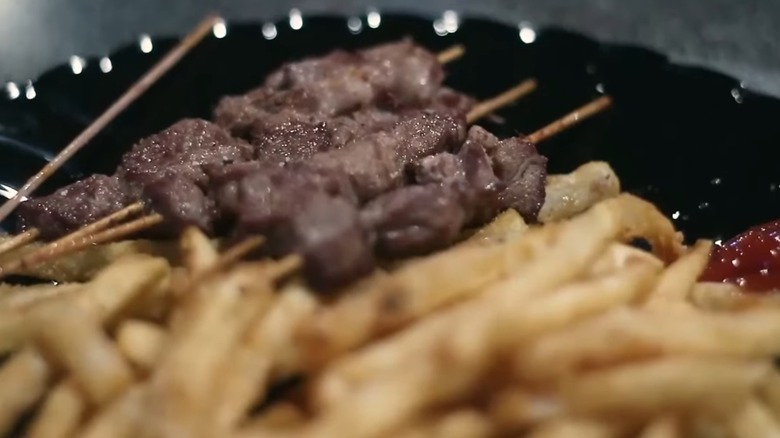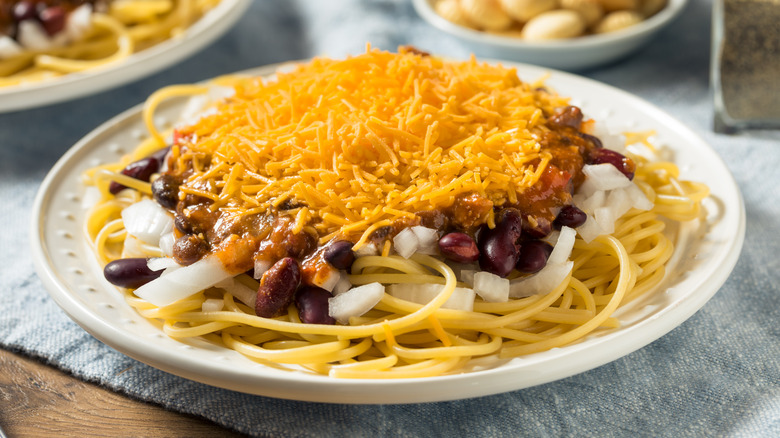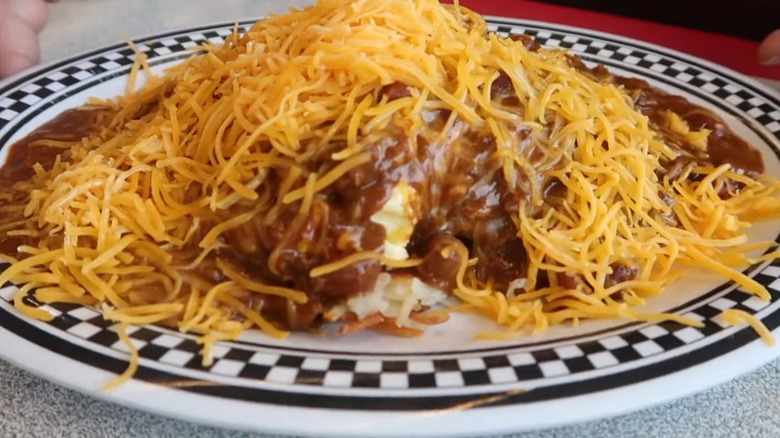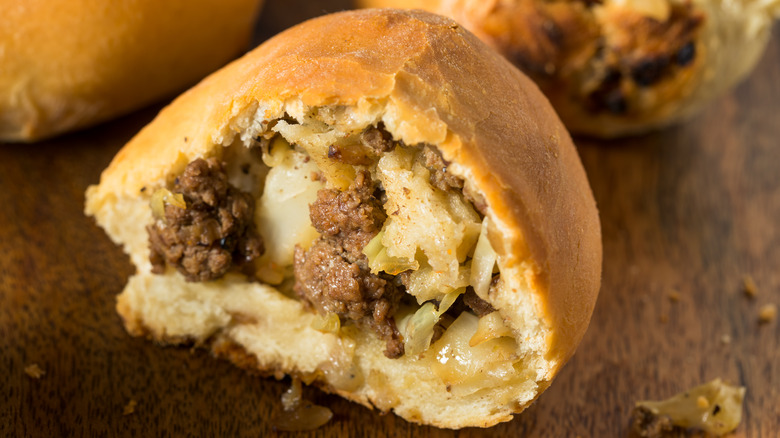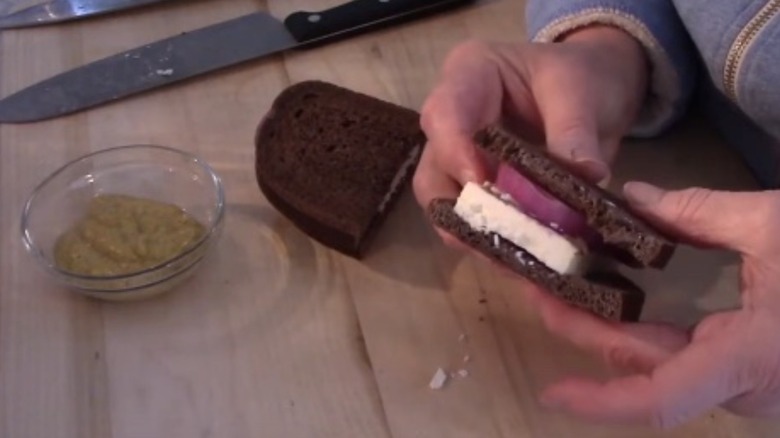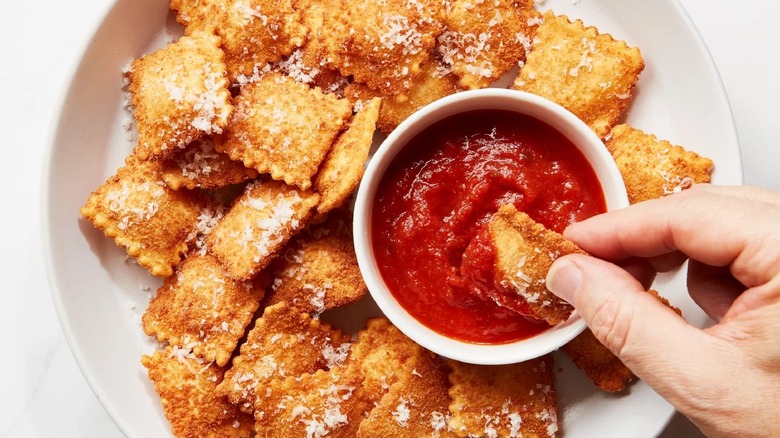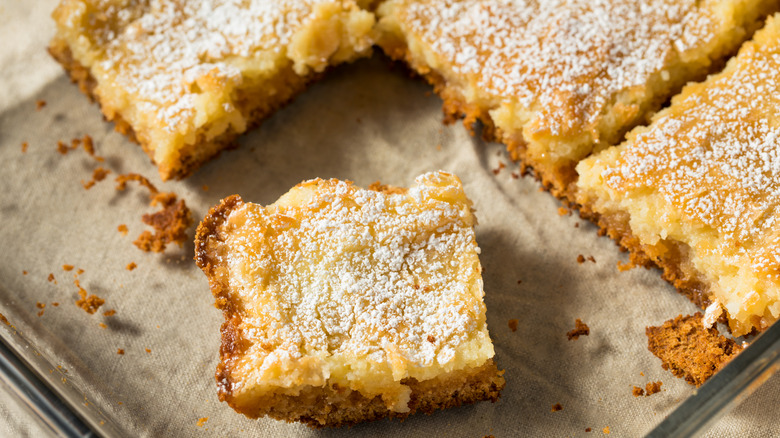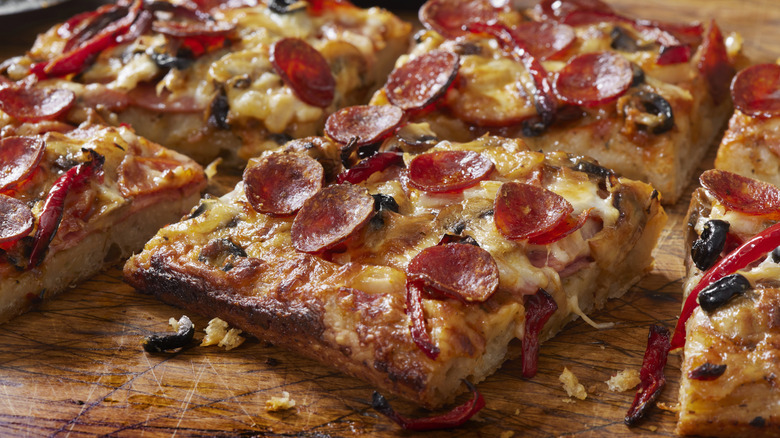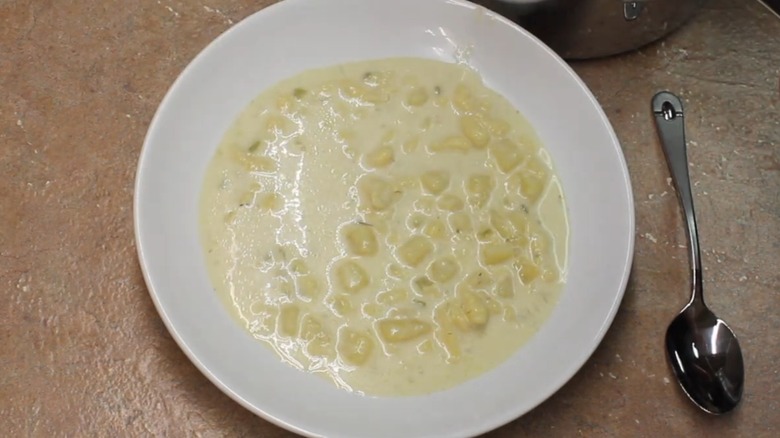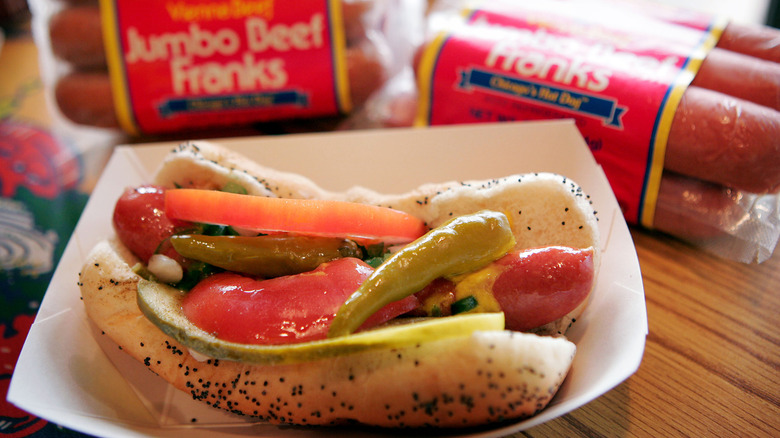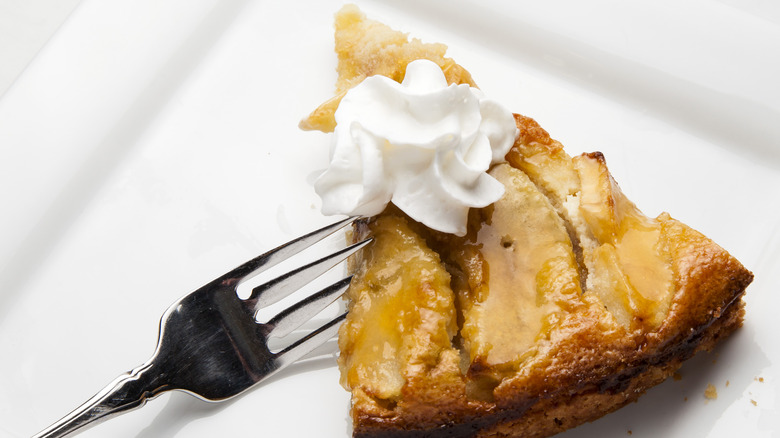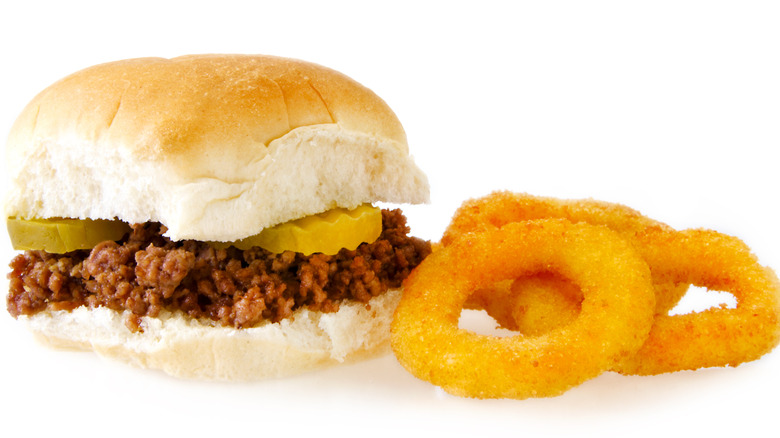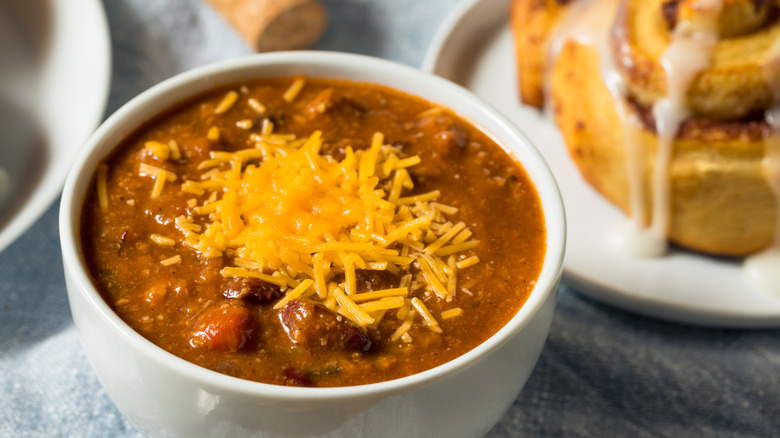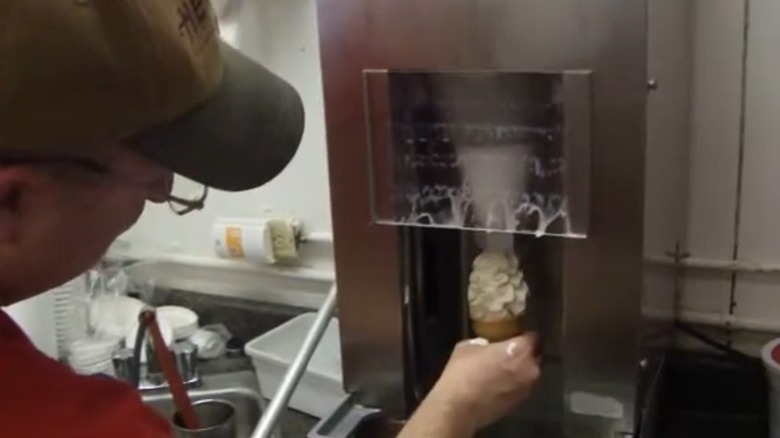14 Iconic Restaurant Dishes You Need To Try In The Midwest
Midwestern food is often overlooked or dismissed as bland, but it's really a mix of cultures that's produced some amazing recipes. A blend of German, Russian-German, and other cultures, along with plain old frugality and a desire for filling food, has given the Midwest a wealth of tasty treats at every meal. Never ignore Midwestern food lest you miss out on some of the most delicious dishes in the country.
While you can technically make some of these at home, these are all restaurant staples in the region. In fact, some of these dishes got their start in restaurant kitchens, created specifically for sale, rather than as homemade dishes that worked their way into the commercial food scene. No matter where they were first made, these dishes are classics and really need to be on your list of things to try the next time you're in the Midwest. And if you currently live there, enjoy the variety every time you eat one of these iconic restaurant dishes.
1. Chislic
Chislic is as simple a food as you can get; it's cubed lamb or mutton on a skewer. The meat can be grilled, deep-fried, or even broiled, and when you order it, you get multiple skewers along with a dipping sauce and some soda crackers. There's no real marinade or meat seasoning other than celery salt or garlic salt in the traditional form. Obviously, you can find a lot of variations.
Chislic is likely the most iconic food you'll find in South Dakota. While the state definitely has other foods you could call iconic, chislic is the one that people tend to suggest that visitors try. Chislic was brought to southeastern South Dakota by European immigrants, but the name itself may derive from "shashlik," a dish of skewered meat from the Ottoman Empire. The dish became South Dakota's official state "nosh" in 2018, and there's a yearly Chislic Festival in the town of Freeman.
2. Cincinnati Chili
If you get offended by beans in chili or can't stand the idea of chili being served with anything other than a cinnamon roll (and we'll talk about that dish later), you might not want to look at Cincinnati chili. But if you love variety and fusion food with unexpected combinations, you're going to love Ohio's take on this meaty dish. Cincinnati chili contains seasoned ground meat, beans, and onions in a nest of spaghetti, and the whole thing is topped with a pile of shredded cheese. The recipe famously includes spices like cinnamon and cloves, but it does not contain chocolate or cocoa as so many cooks claim it does.
Cincinnati chili can be ordered in different ways. One is just the chili, called "one way"; the chili is more like a Mediterranean meat stew in terms of spices. Two-way is the chili poured over spaghetti, and three-way is when you add that shredded cheddar to the top of the chili.
Cincinnati chili was first made in 1922 and has a variation called Skyline chili. This one came about after an employee of the Empress Chili Parlor, where Cincinnati chili was created, developed his own version and set up a restaurant. You'll now hear the names used interchangeably.
3. The Slinger
The Slinger is one of those dishes where several ingredients are layered on top of each other in a way that brings to mind late nights, cheap diners, and absolute comfort consisting of both breakfast and dinner foods. Picture hash browns, eggs, ground sausage, cheese, onions, and chili all piled up in no particular order (although the chili and cheese tend to be on top) with a side of toast, and you can see why this dish has such a following. It's easy to customize, requires no special treatment, and contains just about every food you'd want in an indulgent but unfancy recipe. This is a dish you eat when you need a lot of food.
The history of the Slinger is hazy. It's definitely a St. Louis creation, and it's spread to other states including Illinois. When you try to find out who invented it, a few restaurants stand out, including the Eat-Rite Diner and O.T. Hodge Chile Parlor. However, no one really knows how this heap of food got its name or even why it was concocted in the first place.
4. Runza/Bierocks
Runza sandwiches and bierocks are the same thing; you'll find runzas mainly in Nebraska and bierocks mainly in Kansas. These are dough pockets made in different shapes that contain some version of ground beef, onions, cabbage, and spices; it's also common to find other fillings, but the beef-onion-cabbage mix is the classic version. The shapes can be squares, triangles, and pretty much any other simple geometric shape that you can reproduce with dough. However, commercially-made bierocks tend to be shaped like round buns, and commercially-made runzas tend to be shaped like rectangles.
While runzas and bierocks can easily be made at home, they also make a great on-the-go meal due to their compact shape and neat envelope of dough that keeps the filling from leaking out. So, it shouldn't be a surprise that there's also a fast food chain in the Midwest called Runza. This sells — you guessed it — runza sandwiches, and as of early 2024, the chain has restaurants in five states with most locations in Nebraska. It's been around since 1949 and has drive-thrus.
5. Limburger Sandwich
Think of Limburger cheese as the durian of cheeses; it has a terrible smell but tastes good, or at least that's what fans of this Wisconsin sandwich say. A Limburger sandwich has slices of Limburger cheese, onions, and mustard on rye bread. It's traditionally eaten with a cup of coffee or glass of lager, and the sandwich experienced a decline in demand during Prohibition.
Limburger is from Switzerland and was first made in the U.S. in the 1860s. Its smell changes as the cheese ages, and comparisons have ranged from the smell of feet to sweaty socks or worse. But it pairs well with strong-tasting foods like onions and even strawberry jam. Limburger sandwiches existed at least as early as the 1910s, with one used as a prop in a Charlie Chaplin film in 1916. They were considered a staple food among the working class and are available at bars and taverns even today.
6. Toasted Ravioli
Toasted ravioli is a St. Louis invention, and it's generally accepted that they were created in the 1930s or 1940s when a cook accidentally dropped some ravioli in hot oil. Some stories have a drunken cook as the responsible party while others include a kitchen assistant who misinterpreted another chef's order. As many of these "mistake" stories go, the cook realized the mistake tasted great, and the rest is history. The problem is at least two, if not three or more, restaurants claim they were the ones that made the famed mistake.
Mama's on the Hill, Charlie Gitto's, and Lombardo's have all claimed that "t-ravs," as toasted ravioli are called, first appeared on their menus. However, given how long ago the dish was created, the truth of who first dropped ravioli into oil may be lost to time. Investigations into who may have actually created the dish turn up gap after gap in both time and information, enough to allow details to be embellished or forgotten.
7. Gooey Butter Cake
So many Midwestern dishes seem to center on meat, but the region also has some fantastic desserts. One of these is gooey butter cake from Missouri, which has a bottom layer of cake topped with a gooey filling (or with a center filled with something gooey). One gooey butter cake isn't necessarily going to look like another; you may see cakes that look more like pies filled with thick custard or cakes with sunken tops over gooey centers. Some restaurants serve multiple versions.
More than one person lays claim to inventing the cake. The story is that a baker made a mistake when trying to make a cake and ended up adding ingredients in the wrong proportions. According to messages sent to the cooking website What's Cooking America — and according to comments following the messages supporting one of the stories — the baker in question may have been a man named Johnny Hoffman, who made the mistake, realized it produced something that actually tasted good, and called another baker to help him perfect the recipe.
8. Detroit-Style and Chicago Deep-Dish Pizza
While you can find Detroit-style and Chicago deep-dish pizza outside the Midwest, they're two of the most well-loved restaurant dishes in the region. Detroit-style pizza uses rectangular pans that are modeled on spare pans used in car plants. The story goes that the inventor of the pizza, Gus Guerra, used his mother-in-law's Sicilian pizza dough recipe with tomato sauce and cheese for a new recipe for his restaurant in 1946, and then he baked the pizzas in pans he got from a friend. The pans make the crust bake up nice and crunchy on the outside while keeping it light on the inside.
Chicago deep-dish pizza isn't much older — it was invented in 1943 at Pizzeria Uno — but it's certainly one of the more controversial pizzas around. Instead of having a flat crust covered in sauce, cheese, and toppings in that order, Chicago deep-dish pizza has a crust that's got high sides, like a deep pie. It's filled with cheese, toppings, and then sauce, and some accuse it of not actually being pizza, but rather a casserole or another type of recipe. That's probably not how you want to approach ordering it in Chicago; just treat it as a form of pizza.
9. Knoephla Soup
A lot of the food in the Midwest is from a group of people known as "Germans from Russia." This is exactly what it sounds like; it means someone descended from ethnic Germans born in Russia, rather than in Germany (you may hear them called Russian-German or Volga Germans, too). One of the foods that Germans from Russia brought over is called knoephla soup, which is a potato-and-chicken broth with cream and flour that holds chopped vegetables and small dumplings made from flour and egg. There's typically no meat, although families here and there add some if they prefer it.
The soup is commonly made at home, but it's also a fixture of the Kroll's Diner chain of restaurants in North Dakota. This is comfort food at its best, made as quickly and inexpensively as you like. It cooks up easily in bulk quantities and reheats well, too, making it an economical dish for large families or restaurants serving several cold and hungry customers.
10. Chicago Hot Dog
The hot dog may be a nationally loved food, but in Chicago, there's only one variation that will do. The Chicago hot dog is all beef (usually from Vienna Beef) on a poppyseed bun with sport peppers, a special relish (almost always described as neon green), tomatoes, onions, pickles (spear form only), mustard, and celery salt. There's absolutely no ketchup — it changes the taste of the whole concoction and makes it too sweet. And, all the ingredients have to be in certain proportions. In other words, it isn't a real Chicago dog if you leave out some ingredients and increase the amounts of the others.
The Chicago hot dog uses an all-beef dog thanks to the image people had of kosher meat. The Chicago meat-packing industry didn't have a good reputation for food safety back in the early 1900s, and kosher beef was considered a better choice due to stricter standards. When the Great Depression was in full swing, hot dogs proved to be a filling yet economical choice for a meal. As the price of the meat increased, vendors decided to add more and more vegetables to compensate, so customers could get something satisfying to eat. Eventually, the combination of the hot dog beef, the bun, and the seven toppings emerged as the best-loved combination in the city.
11. Kuchen
Want dessert but aren't sure if you want cake or fruit pie? Try kuchen, the official state dessert of South Dakota and a popular treat throughout the Midwest. "Kuchen" is German for cake, although this is more of a cake base layer with fruit and fruit custard on top. In fact, kuchen in the Midwest can take a few different forms, so it's best to ask what form a particular restaurant serves instead of assuming anything. The Midwest has a lot of German heritage, so it's not that surprising that kuchen would be among its representative dishes.
In South Dakota, kuchen tends to be a layer of cake-like pie crust with a filling of either custard or a fruit-filled, thick syrupy version akin to apple pie filling. It can also be savory, with fillings like cottage cheese. You might also find nut rolls, coffee cakes, and cheesecake-like pastries that are also called kuchen.
12. Maid-Rite (Loose-Meat) Sandwich
Next on the list is an Iowa institution: the Maid-Rite sandwich. This is a loose-meat sandwich, meaning the ground meat isn't formed into a solid patty. Instead, it's piled onto the bun in a heap, similar to a Sloppy Joe but without all that sauce. (You can get ketchup or mustard, but they're not mixed into the meat.) Loose-meat sandwiches may have started out as "steamed hamburgers" in 1920 in Montana. However, another name for this is the tavern sandwich, so-called because an Iowa restaurant called Ye Olde Tavern came up with its own version in 1924.
The Maid-Rite version was born in 1926 when that restaurant's owner decided to work on creating a loose-meat sandwich, and that's the one that really took off, at least regionally. Loose-meat sandwiches are so iconic in the Midwest that they were even the subject of a long-term storyline in the sitcom "Roseanne" in 1992. And by the way, before you brush these off as slightly different Sloppy Joe sandwiches, it's true that the Sloppy Joe is a loose-meat sandwich, but the meat is specifically cooked in tomato sauce and spices. Never call a Maid-Rite a Sloppy Joe.
13. Chili and Cinnamon Rolls
Another chili dish that makes its home in the Midwest is a school staple that also may have started in Iowa and then spread to other states. This is the combo of chili and cinnamon rolls, with the chili being any type you choose that contains beans. The pairing has been around since the 1960s, and legend has it that a thrifty cook, who was trying to get more kids to eat chili for lunch to use up all the beans that the USDA had started sending to schools, included a cinnamon roll along with each bowl of chili. There are hints that the dish may have been around earlier than that in logging camps (and Washington state is one of the few places outside the Midwest that knows of this pairing), but using this combination in school lunches is the better-documented origin.
Go outside the Midwest, Washington, and a few other places, and you'll find the combination is either unknown or greeted with disgust and bafflement. That's not so surprising given that chili and cinnamon rolls are not natural partners on a lunch tray. But if you ask people who grew up in the Midwest about it, they'll tell you those lunches were terrific. Some people actually dip the cinnamon rolls in the chili, but many keep the two separate and simply alternate taking bites of each.
14. Whirl-a-Whip
If you like ice cream with customized blended toppings but don't necessarily want the usual Dairy Queen or McDonald's concoctions, the Whirl-a-Whip is for you. This isn't a food so much as it's a machine, and one that's only available at Dakota Drug in Stanley, North Dakota, or at the Whirl-a-Whip restaurant in Girard, Illinois. The machine produces a soft-serve ice cream with toppings blended in, but what makes the machine so unique — aside from the option of having just about anything as a potential topping choice — is the fact that the soft serve starts out as regular ice cream.
The Whirl-a-Whip was invented in the 1930s but never really gained the visibility and popularity that later ice cream blending machines had. Fixing the machines now, given how few of them exist, requires custom-made parts. Devoted fans still travel to the Midwest to try out mixtures that range from basic ice cream and cookies or nut butter to savory blends with bacon or pickle relish. One thing to note is that you may see the name "Whirla Whip" in some sources; this appears to be another company that's only 30 years old.
